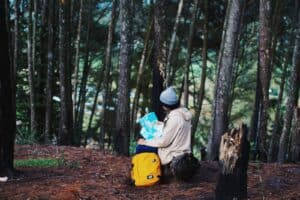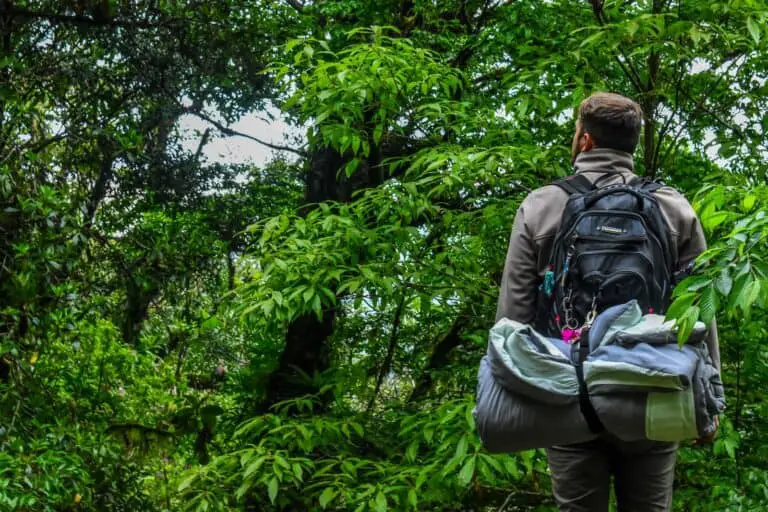Hiking’s a fantastic way to immerse yourself in the great outdoors. But, let’s face it, it’s not without its risks. From sudden weather changes to wildlife encounters, the dangers can be real. But don’t let that scare you off.
In this article, I’ll delve into the potential hazards that hikers may face. We’ll explore how to mitigate these risks and ensure your hiking experience remains safe and enjoyable. So, if you’re an avid hiker or just starting out, you’ll find this read worth your while.
Remember, knowledge is power. Knowing what you’re up against can be your best defense. So, let’s get started and uncover the truth – can hiking be dangerous?
Common Hazards on Hiking Trails

As an experienced hiker, I can’t emphasize enough the dangers lurking on hiking trails. Hikers, both newbies and experts, must remain on high alert to avoid unpleasant or even life-threatening situations. I’ve identified some of the most common hazards to equip you with the necessary knowledge for your adventures.
Dehydration typically tops the list. You’re likely to underestimate your water needs, especially on warm sunny days. It’s important to stay hydrated at all times – remember, even slight dehydration can significantly impact your strength and stamina.
Getting lost is another risk that shouldn’t be taken lightly. Trails can be deceptively tricky to navigate. Many hikers have strayed off the path, resulting in unnecessary stress and wasted time. Always carry a map or a reliable navigation tool to stay on track.
Please don’t take wildlife encounters lightly. Hiking gives you a chance to explore nature in all its beauty, but it also means crossing paths with wild animals. Whether it’s a harmless squirrel or a potentially dangerous bear, knowing how to react is key.
And then you’ve got weather changes. The weather in hiking areas can be wildly unpredictable. From searing heat to sudden downpours, be ready to weather nature’s surprises. It’s always a good idea to check the weather forecast before setting off and to prepare for all eventualities.
Here are some additional hazards to keep in mind:
- Treacherous terrain – keep an eye out for hidden holes, loose rocks, and slippery surfaces
Knowing these hazards is the first step to assuring a safe hike. Follow-up articles will delve into how to safeguard yourself from these risks.
Weather: A Powerful Force of Nature
As we journey further into the topic of hiking hazards, it’s impossible to overlook one of the most omnipresent and unpredictable forces hikers face – the weather. Nature is known for its volatile weather patterns and hiking, often nestled right within unguarded nature, is no exception.
Unfavorable weather conditions can turn an enjoyable hike into a dangerous trek in the blink of an eye.
How Weather Shifts Could Hamper Your Hike
Hardly anything can toy with our hiking plans as much as sudden weather changes. One moment it’s warm and sunlit; the next, it’s cold with storms looming. And these aren’t minor inconveniences – rapid weather changes can lead to a range of problems for hikers.
- Storms: These can create treacherous conditions. Wet, slippery trails and poor visibility are common during a storm. Storms also significantly increase the risk of hypothermia or even lightning strikes.
- Heat: Extreme heat can lead to heat exhaustion and dehydration, which if left unchecked can spiral into a life-threatening condition – heat stroke.
- Cold: If you’re not adequately prepared for cold weather, hypothermia can set in.
Understanding weather patterns and being prepared for rapid shifts can make a world of difference. The weather doesn’t have to be an enemy if you continually keep in check and adapt to it at a moment’s notice. I’ll delve into the importance of regular weather checks and suitable clothing in the next section.
Wildlife Encounters: Proceed with Caution

Now that we’ve touched on the subject of weather-related hazards, let’s move on to another aspect that’s equally important – wildlife encounters. Nature presents its own set of challenges. One of these challenges, something many of us might not even consider, is wildlife.
It’s crucial to understand that our lovely hiking trails are home to countless species, some of which may get territorial or act aggressively if they perceive a threat. You might cross paths with a variety of wildlife – from snakes and spiders to bears or even mountain lions! Each animal requires a specific set of guidelines for peaceful coexistence.
To limit the danger of wildlife encounters:
- Remain make minimal noise when possible to avoid startling any creatures in your path.
- Keep a safe distance when observing wildlife.
- Don’t feed any animals you come across – this can lead to negative behaviors.
Awareness is key here. It’s crucial to research the local wildlife in your hiking area before you set off; this way, you’ll know what to expect and how to react if you encounter any creatures along the way.
Let’s not forget – these creatures are part of the very nature we’re here to enjoy, and treating them politely is a significant aspect of being a responsible hiker. Since we’re guests in their home, let’s make it a point to leave no trace of our visit — and that includes not interfering with their natural behaviors. Respect for wildlife is just as important as having the right gear or being aware of extreme weather patterns.
So, as we proceed with our discussion about hiking safety, it’s clear that dealing with wildlife encounters is a skill every hiker should possess.
Physical Injuries: Accidents Do Happen
Now that we’ve explored hazards such as dehydration, getting lost, and wildlife encounters, it’s time to talk about something equally important, physical injuries accidents do happen, after all.
Unlike other hazards, injuries are not always visible from the get-go. They tend to sneak up on us. Often, you might not realize you’re hurt until you’ve come back from your hike, exhausted and your adrenaline levels have decreased.
Twisted ankles, strained muscles, sprained ligaments, broken bones, these are all common injuries that hikers experience. This could be the result of not planning ahead, underestimating the intensity of the trail, or simply stepping badly on an uneven surface.
Forhikerslayered, the danger is multiplied by the roughness of the terrain and the isolation from immediate medical help. That’s why you need to know basic first-aid and carry a first aid kit.
Let’s take a look at some preventative measures:
- Wearing appropriate footwear can reduce the chances of a twisted ankle or foot injuries.
- Maintaining a steady pace instead of rushing is crucial. You need to remain in control of every step.
- Warm-up stretches before the hike can prevent muscle strains. Also, regularly hydrate and feed yourself to keep fatigue at bay.
When it comes to high-altitude hiking, conditions like Acute Mountain Sickness (AMS), can also prove hazardous. AMS is essentially altitude sickness and can occur from as low as 1500 meters. The impact it might have can range from mild flu-like symptoms to severe, life-threatening conditions.
One effective way to avoid the above is to ascend slowly, allowing your body to acclimate to the changing conditions. Also, recognize the symptoms early and descend when necessary.
Finally, don’t forget about the importance of rest. Persevering through fatigue and pushing your limits might seem “tough,” but it’s actually a recipe for physical injury.
And speaking of rest, let’s dive into the aspect that’s often overlooked by hikers – the importance of sleep during multi-day hikes.
Navigation Mishaps: Getting lost in the great outdoors

While many of us view a hike as an opportunity to escape from the digital world, GPS and map apps have become essential tools for today’s hikers. Even skilled explorers can lose their way in unfamiliar territories. It’s easy to think you’re following the right path until a sudden shift in the landscape leaves you stranded in a disorienting maze of trees or rocks.
Carry Reliable Navigation Tools
Smartphone apps can be handy, but they shouldn’t be your only tool. Always carry a physical map and compass. Remember to learn how to use these tools before you venture out. Many hiking associations offer navigation workshops, a worthy investment for the serious hiker.
Pay Attention to Your Surroundings
While navigating, it’s crucial not to neglect your immediate surroundings. Look around and note unique landmarks. They can be invaluable if your path becomes indistinct. Sync this natural knowledge with your map to understand your position better.
Leave Travel Markers
Leaving visual markers can also be beneficial while heading off-trail. A stack of stones, a piece of brightly colored fabric tied around a tree, or a distinctive footprint in the soil are all ways to mark your path. Always remember to remove these markers on your way back, keeping the trail as pristine as you found it.
Trust Your Instincts, But Not Too Much
Relying on your instincts is vital but don’t let overconfidence cloud your judgement. Veering off-trail to take a shortcut or ignoring a marked path to follow your intuition can lead to unnecessary risks. Remember, even seasoned hikers can get lost. It’s OK to ask for directions or retreat to a known location when unsure.
Combine these tips with the added security of traveling in a group and informing someone off-trail about your planned travel route. These simple precautions can prevent a majestic hike from turning into a disorienting ordeal. In the next section, I’ll delve deeper into the importance of taking breaks and preventing tiredness during hikes.
Safety Tips for a Safe Hiking Experience

Though hiking may bring a list of hazards, it’s equally essential to know that most of them can be mitigated with the right preparation. In the spirit of empowering you to hike safely, I’ll share important safety tips.
First off, appropriate gear is critical. It’s not about fashion or impressing your companions, but about comfort, protection, and survival. Include items like a waterproof jacket, good boots, a hat, and sunglasses. Don’t forget a first-aid kit, water purifier, and headlamp for emergencies.
Map reading and navigation skills are non-negotiable. As I’ve mentioned before, getting lost is a major hazard and knowing how to navigate is a lifesaver. Always:
- Carry a hard copy map and compass, don’t depend solely on your phone.
- Learn how to read a map and use a compass before you hit the trail.
- Ensure your GPS device is fully charged, but consider it a supplement, not a replacement, to map and compass.
Let’s talk about hydration and nutrition. Even on a short hike, it’s possible to suffer from dehydration and fatigue. Ensure you pack enough food and water. Here’s a rule to follow:
- Carry a minimum of 2 liters of water per person per day
- Include high-energy snacks like trail mix, energy bars, or dried fruit.
Wildlife encounters can be another unexpected danger. You’re in their home, so it’s important to know how to behave. Store food correctly to avoid attracting animals, make noise while hiking to scare off any wildlife, and always maintain a respectful distance.
And, of course, don’t overlook the need to let someone know your plan before you set off. Notifying a friend or family member of your trail choice, start and estimated finish time provides a safety net should something go wrong. It’s not only smart but necessary for safer hiking.
Remember, a safe and enjoyable hike is a prepared hike. These tips serve to enhance your hiking skills, equip you well, and most importantly, keep you safe from potential hazards on the trail. So, take heed, prepare well, and embrace the majestic outdoors that awaits you.
Conclusion: Can Hiking Be Dangerous
Let’s clear the air – hiking can indeed be dangerous. But don’t let this deter you from the trail. With the right gear, skills, and preparation, most risks can be managed effectively. It’s about respecting the wilderness and being prepared for unexpected situations.
Your safety on the trail is largely in your hands. Equip yourself well, stay hydrated, nourished, and navigate with confidence. Respect wildlife and let someone know your plan. It’s these precautions that make the difference between a perilous journey and a safe, enjoyable hike.
So, is hiking dangerous? It can be. But with the right approach, it’s a risk well worth taking. After all, the rewards of hiking – the breathtaking views, the tranquility of nature, the sense of achievement – are truly unmatched. Stay safe out there, and happy hiking!


